Products containing radios are intentional radio transmitters and subject to various regulatory requirements including certification scheme.
A certificate must be obtained before the products can be imported and sold in the target country market, which enables product manufacturers to demonstrate that their products meet various design and safety standards and affords consumers’ confidence when selecting products in the marketplace.
CTS can test and certify for the following regulatory agencies:
TELECOMMUNICATIONS CERTIFICATION BODY (TCB)
FOREIGN CERTIFICATION BODY (FCB)
NOTIFIED BODY (NB)
Certification
Certification is the most rigorous approval process for RF Devices having the greatest potential to cause harmful interference to radio services. The authorization is issued by a Telecommunication Certification Body (TCB) or other Assessment Body (AB) based on evaluation of the documentation submitted by the responsible party. Testing must be performed by a recognized, accredited testing laboratory. Depending on the country, information including the technical parameters, and descriptive information for all certified equipment is commonly posted on a government-maintained public database.1
Usual Process
- Contact
- Client contacts CTS to request information regarding the testing, procedures, and fees for certification of the product.
- Quote
- The information and materials listed under ‘Materials Required for Certification’ lower on this page are required in order to complete product Certification. CTS will review the materials when received. If additional information is required, CTS will contact you.
- Work Time
- CTS will begin work when required information, equipment, purchase order and required deposit are received. The project can normally be started within 1-2 weeks.
- Failures
- If the equipment fails to meet the test requirements, CTS will notify the client and outline the failures. Upon request, CTS can work to determine and/or correct the possible sources of the failures. If the failures cannot be corrected with the sample CTS has, an outline of where the problems originate and design changes that may correct the failures will be given to the client. If the failures continue, the client may take the following actions:
- Schedule time to have an engineer familiar with the design and operation of the equipment to interface with CTS to assist in finding the needed modifications.
- Send a list of possible modifications for CTS personnel to make on the unit.
- Send a unit with modifications already installed.
- NOTE: To avoid the delay failures can create, it is suggested that multiple new samples or a list of modifications for CTS to make as mitigation steps.
- If the problems cannot be resolved in a reasonable length of time, the client will be invoiced for the work completed to date on a prorated basis. CTS will continue to assist the client in every way. A new quote will be issued for the remaining work once the corrections have been made.
- If the equipment fails to meet the test requirements, CTS will notify the client and outline the failures. Upon request, CTS can work to determine and/or correct the possible sources of the failures. If the failures cannot be corrected with the sample CTS has, an outline of where the problems originate and design changes that may correct the failures will be given to the client. If the failures continue, the client may take the following actions:
- Completion
- After the satisfactory completion of the tests, CTS will organize the test data and filing materials into a complete report. A copy of the report will be delivered electronically to the client for their records. The report is submitted to the TCB/AB for approval.
- Certificate / Grant
- Once all necessary documents are received in good order, the TCB/AB cert process normally takes 1-3 weeks. CTS has established relationships with preferred TCBs/ABs. You also often have the option of using a TCB/AB of your choice.
- Congratulations
- The equipment can now be sold in the completed countries as a Certified device.
Materials Required Certification
- Equipment: One (1) set of the equipment to be certified. The interconnecting cables, power supplies and software must be included. If the equipment is a computer peripheral, it must be tested with a host computer. The host computer must have the necessary software installed to interface with the equipment under test. Any additional peripherals needed to form a complete “system” are required.
- Client’s contact name, address, and phone number.
- Applicant company name and address.
- Manufacturer company name and address.
- Identification number.*
- Model number(s) and/or trade name(s) of the equipment to be certified. Specify differences between the multiple model numbers.
- Schematic diagram(s) of equipment being certified.
- Block diagram showing the signal paths and clock frequencies of the equipment being certified.
- User’s operating/installation manual which contains the required statements.*
- Additional instructions if needed for CTS to operate and install the equipment properly for testing.
- The actual label to be affixed to the device. This may be submitted as a photograph, engineering drawing, or actual sample.*
- A diagram showing the label placement on the equipment.
* Additional information is available from CTS explaining these requirements.
CTS has developed a knowledgeable, experienced team that is focused on getting products certified as efficiently as possible. We are always available to answer questions, and we believe good communication is the key to achieving compliance.
Please contact us for more information on product Certification.





